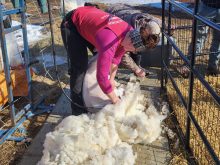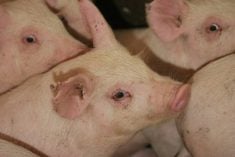Canada’s first cattle on feed report shows Alberta and Saskatchewan have nearly one million calves in feedlots this fall.
Released at the beginning of October, the report is a partial response to requests from the Americans for more information about the Canadian industry.
“A lot of people knew they needed a report like this. Hopefully, it will equalize the sharing of information,” said Debbie McKay, who co-ordinates statistics for Cattlefax.
In the United States, the U.S. Department of Agriculture’s monthly cattle on feed reports are watched closely for their affect on cattle futures prices.
Read Also

Charges laid after cattle theft
Saskatchewan RCMP lay two charges against a man after six cattle went missing.
The Canadian report will be updated on the second Friday of every month. Feedlot operators provide the information based on monthly inventory.
The report focuses on Alberta and Saskatchewan because most of the feeders are there.
“Alberta and Saskatchewan make up 80 percent of the cattle fed in Canada,” said McKay.
Cattlefax will soon include numbers from Ontario and eventually will work in statistics from the entire country.
On Sept.1, 975,400 steers and heifers were on feed and by Oct. 1, the report said 1.045 million head were in feedlots.
About one-third of those placements weighed more than 800 pounds when they entered the lots.
Statistics Canada figures for July 1 confirmed the massive volume in Alberta.
The national herd, which includes all classes of cattle, is 14.5 million head. Alberta was the leader with 5.4 million head of mostly beef animals. There were 1.9 million bred cows and 1.8 million calves.
The Saskatchewan herd was 2.7 million animals as of July 1, of which 1.1 million were bred cows.
Ontario followed with 2.1 million, but 400,000 head were dairy cows.
As of the end of 1998, Canada finished 3.4 million animals for
slaughter.
Alberta was responsible for finishing 2.3 million.

















